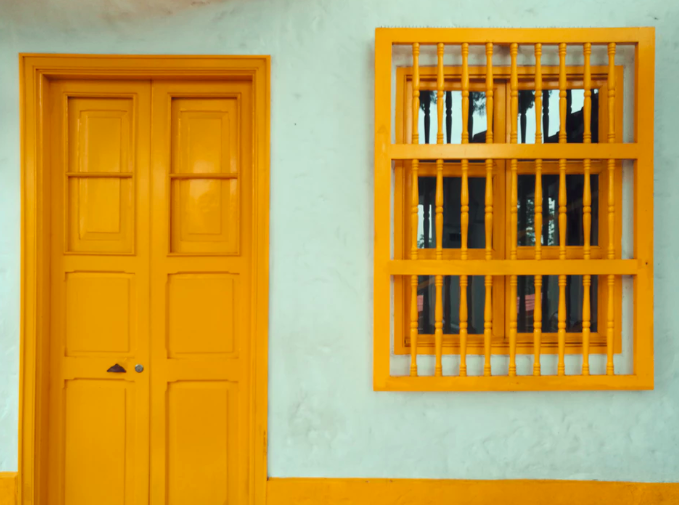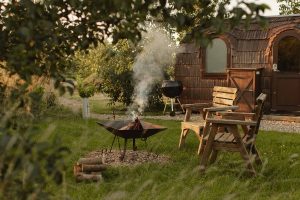The BALANCE guide to Medellin

Known a few decades ago as one of the most dangerous cities in the world, due to high levels of murder, kidnapping and other drug and gang-related crime*, the Colombian city has come on a long way since the reign of Pablo Escobar and is now becoming a destination for tourists and travellers seeking music, art and a beautiful place to spend some time.
(*which you’ll probably know if you’ve watched Narcos, the Netflix series pretty much unanimously hated by Colombians due to its one-sided, and often inaccurate, look at the country’s history and culture)
HOW TO GET TO MEDELLIN?
You can fly from the UK, usually with one or two stops, in around 13 hours for £450 return.
To break up the journey, go via the Colombian capital of Bogota, another great place to spend a few days, or Cartagena, up on the coast.
Get the bus, if you’re on a budget, or fly inexpensively to Medellin — then admire the city on the drive into the centre.
WHERE TO EAT IN MEDELLIN?
You can’t go without trying one of the traditional dishes, bandeja paisa (unless you’re vegan as it’s pretty animal product-heavy), which translates as bandeja = platter and Paisa = someone from the Paisa region — a huge portion of beans, fried egg, rice, arepa (maize cakes), plantain, avocado and different types of meat.
But you can get pretty much every type of cuisine, from pizza (try Pizzeria Olivia) to vegan food (try Dharma Vegan Resto & Cafe or Verdeo).
Other good places are Hacienda (recommended by a Medellin-born tour guide), of which there are a few in the city, which offer Colombian food with some vegetarian alternatives.
For drinks, check out El Social for a good mix of locals and tourists, which makes for a fun, authentic vibe.
WHERE TO RELAX IN MEDELLIN?
It’s not the most chilled city on the planet, due to the high-energy atmosphere, number of people and shortage of places to just sit, but the myriad coffee shops, restaurants and bars are good locations from which to watch the world go by.
WHERE TO STAY IN MEDELLIN?
Poblado is emerging as the place to be for tourists, thanks to the range of eateries that could be anywhere from East London to LA. From there, you’re just a short Metro ride away from anywhere you’d want to be — which, in itself, is an experience. Often hailed as one of the integral elements of the city’s revamp, the transport system is highly regarded and worth a journey.
View this post on Instagram
WHAT TO DO IN MEDELLIN IF IT’S SUNNY
It’s pretty changeable but there’s no shortage of things to do, whatever the weather. The walking tour, as with most of the Colombian cities, is a great way to learn about the place, find your bearings and have someone do the navigating as you wander around the must-see places.
Worth doing pretty early on in your trip, it will give you ideas for other things you’d like to do, either via recommendations from the friendly, knowledgeable tour guides or other people you meet.
If you want something a little less full-on, check out Jardin Botanico, the botanic garden up by the Universidad stop on the Metro, which has loads of beautiful plants, a lake and some iguanas. Or get the cable car to Parque Arvi for a breathtaking view of the city.
WHAT TO DO IN MEDELLIN IF IT’S RAINY
Just hang out. The rain is usually pretty brief, so take cover and then continue with your plans. The museums are also worth a visit, particularly the Museo Casa de la Memoria, the Memory House Museum, which is dedicated to honouring the victims of the urban conflict and telling their story. Though most of it is in Spanish, you can definitely get enough if you only speak ‘un poco’, thanks to the subtitled films and universally moving installations.
WHAT TO DO EITHER WAY
Medellin is based, impressively, in the middle of loads of mountains, meaning buildings sprawl up the inclines on all sides. Around the area are some particularly beautiful places, like Jardin, Guatape and Santa Fe de Antioquia.
For some well-earned down time, after a stay in the city, head up to La Finca, an eco hostel in the hills just a mototaxi (a motorbike with a tuk-tuk-esque carriage) ride away from the bus stop in San Jeronimo. From there, you can just chill by the pool, admiring the incredible landscapes, wander down to the natural waterfalls or do a coffee tour at La Marquesa. The small, family-run business, which has been in the industry for decades, still grows and prepares the coffee using traditional methods, making sure the process is as artisanal, natural and in keeping with the ecosystem as possible. In just a few hours, you see the laborious and intricate process — from seed to bean to cup — and it’s well, well worth it, especially if you haven’t managed to get to the coffee regions like Salento. Prepare to never take your coffee for granted again.








